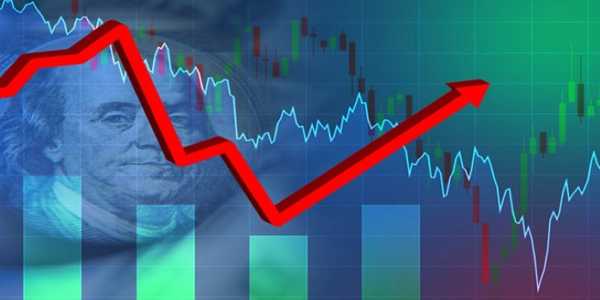Why Predictive Analytics Are Changing Investment Strategies
Predictive analytics is one of those terms that might sound technical, but in reality, it's reshaping how investments are made. Predictive analytics uses past data, algorithms, and machine learning to forecast future outcomes. It's like having a crystal ball, but one based on complex data rather than magic. Let's explain how and why predictive analytics are making waves in investing.

What Exactly Is Predictive Analytics?
Before we discuss predictive analytics' impact on investment strategies, it's essential to understand what it is. Predictive analytics is a way to use data from the past to make informed guesses about the future. Businesses have used predictive analytics to predict sales trends, customer behaviour, and inventory management. Now, this same technology is being applied to investing.
The process involves analyzing historical data—like stock prices, economic indicators, and social media trends—to spot patterns. These patterns are then used to predict future market behaviour. It's not about guessing; it's about using accurate data to make educated predictions.
How Predictive Analytics Is Used In Investing
Investors have always relied on data, but predictive analytics takes it to another level. Instead of looking at past performance and trying to guess what might happen next, predictive analytics uses complex models to forecast potential outcomes. Here’s how it’s changing the game:
Market Predictions: Traditional market analysis looks at historical data and tries to spot trends. Predictive analytics does this, too, but it's much more sophisticated. It can analyze vast amounts of data, far more than any human could, and do it much faster. This means that investors can get insights into potential market movements well before they happen.
Risk Management: Every investment comes with risks, and managing those risks is a big part of any investment strategy. Predictive analytics can help by identifying potential hazards before they become a problem. For example, it can spot early signs that a company's stock might be heading for a downturn, allowing investors to make adjustments before it's too late.
Optimizing Portfolios: Building a diversified portfolio is critical to managing risk, but deciding how to allocate investments can be tricky. Predictive analytics can take the guesswork out by analyzing how investments will likely perform in various scenarios. This helps investors optimize their portfolios for the best possible returns.
Identifying Opportunities: One of the most exciting uses of predictive analytics in investing is its ability to identify new opportunities. Analyzing trends and patterns can help spot investments that others might miss. This could be anything from an emerging market to a company about to take off.
The Human Element In Predictive Analytics
While predictive analytics is powerful, it's important to remember that it could be more foolproof. After all, it's based on data from the past, and the future can always throw a curveball. That's why the human element is still crucial in investing.
No matter how good the predictive models are, they must be interpreted and used by people who understand the markets. Predictive analytics can provide insights, but it's up to investors to decide how to act on those insights. It's a tool, not a replacement for human judgment.
Real-World Examples Of Predictive Analytics In Action
To understand the impact of predictive analytics on investing, let's look at some real-world examples:

Hedge Funds: Hedge funds have been early adopters of predictive analytics. These funds use complex algorithms to analyze vast amounts of data and make split-second trading decisions. This has allowed them to outperform traditional investment strategies, at least in some cases.
Retail Investing: Predictive analytics benefit not just the big players. Platforms like Robinhood and Betterment use predictive analytics to help everyday investors make better decisions. These platforms analyze user data to offer personalized investment advice, helping users optimize their portfolios based on risk tolerance and goals.
Algorithmic Trading: Algorithmic trading, or "algo-trading," is perhaps the most direct application of predictive analytics in investing. This involves using algorithms to execute trades based on predefined criteria automatically. Predictive analytics plays a vital role in this by helping to determine the best times to buy or sell based on historical data and market conditions.
The Benefits Of Predictive Analytics In Investing
The rise of predictive analytics in investing comes with several benefits that are worth noting:
Increased Accuracy: Predictive analytics, which relies on data rather than gut feelings, can lead to more accurate predictions about market trends and investment outcomes.
Speed: In the fast-paced investing world, analyzing data quickly can make all the difference. Predictive analytics allows investors to make decisions faster than ever before.
Personalization: Predictive analytics can tailor investment strategies to individual needs and goals. This is particularly useful for retail investors who might have resources different from those of significant hedge funds.
Challenges And Limitations
While predictive analytics offers many advantages, it has its challenges. Here are a few to keep in mind:
Data Quality: Predictive analytics is only as accurate as the data it's based on. If the data is complete or correct, the predictions will be, too. This makes data quality a crucial factor in the effectiveness of predictive analytics.
Overfitting: Overfitting is a common problem in predictive analytics, where a model is too closely fitted to historical data and fails to generalize to new data. This can lead to inaccurate predictions and poor investment decisions.
Market Unpredictability: The market can still be unpredictable even with the best data and algorithms. Black swan events—unexpected events with significant impacts—can't be predicted by any model, no matter how sophisticated.
Conclusion
Predictive analytics changes investments by providing investors with powerful tools to analyze data, manage risk, and identify opportunities. While it's not without its challenges, the benefits of predictive analytics make it a valuable asset in today's investment landscape. Whether you're a seasoned investor or just getting started, understanding how predictive analytics works can help you make smarter investment decisions.





